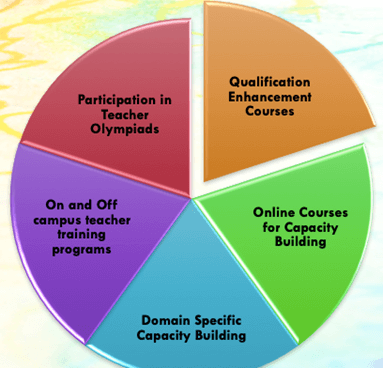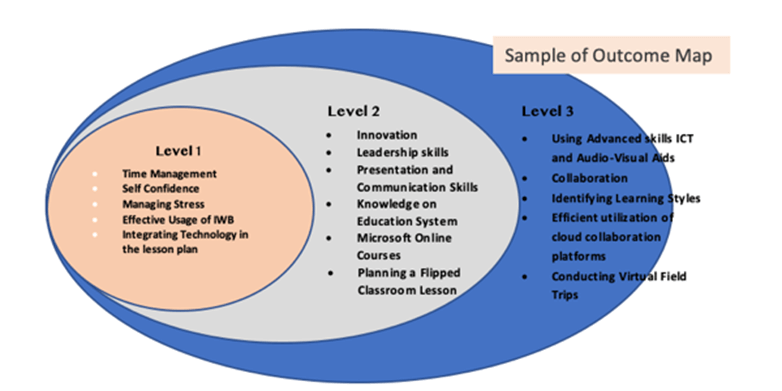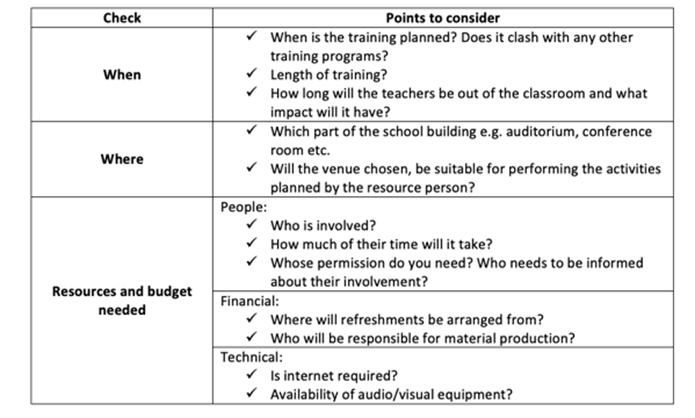How to learn on the job, when your job is teaching?
There are several factors that shape the education landscape. These include the changing age structures, the changing world of work and jobs, knowledge-based economies, the concept of learning societies, rapid developments in ICT and social connections and values. It is for this reason that policymakers have increasingly focussed on the need to develop system capacities for educational reform and change.
Attempts at reform in education mostly aim to narrow the widening gap between the traditional capabilities of the educational system and the emerging demands of the information age.
However, considering the continuum of change, educators appear to be less clear about what constitutes a legitimate reason for the change.
According to James and McCormic, today’s situation presents a challenge for teachers and schools who will need to focus on two things simultaneously: teaching the substance of subjects and helping pupils to learn the ideas and practices associated with the process of learning itself (2009, p. 973).
Hence, it can be said that as a profession, teaching requires utilizing new trends and knowledge throughout a teacher’s career, and therefore, requires continuous professional development. In this way, teachers may be able to fulfill their professional roles in the changing contexts in which teachers work and learning takes place (Wideen, Mayer-Smith, & Moon, 1996; Day, 1999; Sandholtz, 2002).
This article aims to present a case study on the practices of INSET (in-service education and training) activities conceptualized after a series of steps administered to a group of teacher educators in Ahlcon International School. The article starts with a brief articulation of teachers’ needs in professional development and elaboration on the possible contributions of INSET for developing teachers. The school-based model of INSET and its possibilities and limitations have been considered. The article concludes with some critical remarks on the issue being explored and some practical suggestions for effective INSET have been made in the final section. This article will be useful for the educational administrators and leaders who aim to plan, design and provide contextually appropriate teacher service education programs catering to their needs and requirements.
Introduction
Schools of today are transforming their style of teaching from dispensing knowledge to facilitating learning. Technology is shaping the educational landscape in a significant manner. Learners, the digital natives have a natural urge to learn through technology and the educators, the digital migrants have to struggle a bit. The scope and quality of pre-service training are not encouraging.
On the job learning for the teachers, therefore, becomes paramount to quality education. In addition to classroom management, new pedagogies, differentiation and personalization in learning and embedding technology is the way forward.
Challenges
The present challenges in what teachers teach and what students learn are many;
- Lack of teacher motivation and incentivization.
- The generation gap between learners and educators.
- Inadequate pre-service training.
- Inability to incorporate technology in teaching-learning.
- Use of learning platforms (both online and offline) like Coursera, Edex, Swayam, Diksha, Sakshat, Microsoft Education, Google Classroom on, Edtech Tools etc. for building their core competencies and other skills for rejuvenating the classroom experiences.
Suggested Solution
Schools must devise a need-based teacher professional development program to provide teachers with learning opportunities. Let us call it In-Service School-Based Education for Teachers (INSET).

Implementation Plan
STEP 1: Training Need Analysis (SWOT)
A SWOT analysis centred around classroom standards focussing on the integration of technology in the classroom (https://drive.google.com/open?id=1V1-3uzAJVipgfRdHZ87-vxmHalki8Fca) must be conducted at the beginning of the academic session.
After the SWOT analysis, the training modules are decided in consultation with teachers. There are two levels – one identified by the school management for the whole school development; the other that the teachers identify for improving their skills and teaching. To effectually analyse the needs, online questionnaires in the form of google forms are administered to the group of teacher trainers with an aim to obtain their opinion on the training required.
The questionnaire is divided into three sections:
- Core Competencies (https://goo.gl/forms/ty2ygtlX2qvPD9tb2)
- Basic Skills (https://goo.gl/forms/3dw825eL4haI0bCb2)
- Integration of Technology (https://goo.gl/forms/TREONUvPUvB0kzxI3)
STEP 2: Designing
Once the need is clear and the vision has been developed, it is time to design the teacher training modules. The results of the need analysis help us clearly spell out the objectives, resources and timelines of our yearly professional development calendar accommodating the training modules.
A three-tiered sample outcome map depicting the training modules is as follows:
 STEP 3: Implementation
STEP 3: Implementation
Once the training modules are designed, a professional development coordinator should be appointed to look into the enabling factors for the implementation of the INSET Program.
 STEP 4: Evaluation and Reflections
STEP 4: Evaluation and Reflections
The constructive feedback of the administered training modules is gathered in the form of Microsoft OneNote Staff Notebook with the desired template. The impact is studied with regard to the following:
- Skills and competencies gained by teachers
- Attainment of intended learning outcomes by the students
After the impact analysis is done, it is important to gather reflections from the teachers. This can be done digitally through online surveys like Survey Monkey, Google and Microsoft forms etc. Online reflective journals like Penzu and note-making platforms such as Evernote, OneNote also offer possibilities for appropriate reflections.
Conclusion
The best practices are planned and designed with the aim of achieving the desired learning outcomes of students and teachers. The change brought about should become a way of working and should not be treated as a one-off event. For change to be institutionalised, time needs to be apportioned to teacher education initiatives to encourage them to take responsibility for their professional development. The benefits of the program include:
- Motivating teachers to undertake innovative experiments including classroom interactions, laboratory work, digital learning etc. for greater impact of his/her teaching on the students.
- Helping teachers in devising some ingenious ways/innovative activities/instructional material for connecting the students with Sustainable Development Goals.
- Encouraging them to effectively integrate engaging classrooms activities to cater to the differentiated needs of the learners (gifted/ need support students with special needs).
- Preparing them to effectively mentor the peers in overcoming the challenge and difficulty of handling the technological resources/ developing instructional material/ adaptation to the changes.
- Assisting them in exhibiting professionalism by maintaining a commitment to professional ethics, international-mindedness and the school’s mission and vision.
- Helping teachers in making a mark and infusing new ideas & setting the benchmarks standards in the teaching-learning community.
- Assisting the teacher in demonstrating measurable achievements in the community beyond the classroom that provide unique and distinguished models of excellence for the teaching profession.
When schools embed such a roadmap for ‘On the Job Learning’ for the teachers in their annual calendar, and when teachers become the designers of that professional learning, accountable for its implementation and success, supported by the vision of the school leaders, they stand a good chance of success.
**References**
- Fullan, M. (2009). Michael Fullan Response to MS 3 Questions about personalised learning. Retrieved from:http://www.michaelfullan.ca/media/13435863160.html
- Kothari Education Commission (11964-66)
- In-service Teacher Education package for primary teachers, NCERT, 1988
- Pandey K., Ashok (2017). ‘The Pedagogical Life – Essays on Educating India’ published by Sheriden Book, Delhi
- Teacher Education Planning Handbook, 2017;britishcouncil.in/englishpartnerships
Authors
- Ms Dimple Puri, Headmistress Middle Section at Ahlcon International School Delhi now heads DLF World School Greater Noida
- Ms Divya Kapoor, Academic Coordinator at Ahlcon International School Delhi is now Headmistress at Pragyan School Greater Noida
Acknowledgement
The authors acknowledge the guidance and support provided by the management of the school, Director, Ahlcon Group of Schools, Dr. Ashok Pandey and the members of the faculty of Middle Section in developing the INSET at Ahlcon.






I believe that we should keep on updating ourselves.
As a teacher, engaging in continuous professional development is essential for staying current with best practices, refining teaching techniques, and fostering lifelong learning habits among students.
Continous professional development is important for growth of a teacher as he has to face many challenges during the contemporary world.
education technology has been revolutionized by social media so directing the students on right direction and keeping himself updated.
Continuous Professional Development (CPD) for teachers involves ongoing training and learning opportunities to enhance their skills and knowledge in education.
Teachers can improve their skills and knowledge in education by participating in ongoing training programs and learning opportunities known as Continuous Professional Development.
✅
It’s important to be at par with new strategies and techniques to be inculcated within the four walls of the classroom. Teachers needs to be updated.
Truly said Ms Shazia.
Teachers may be able to fulfill their professional roles in the changing contexts in which teachers work and learning takes place….. One of the best takeaway
I totally agree with this, as the teachers of tomorrow we should be equipped with the necessary skills to cater the needs of our students.
Got some insights!!